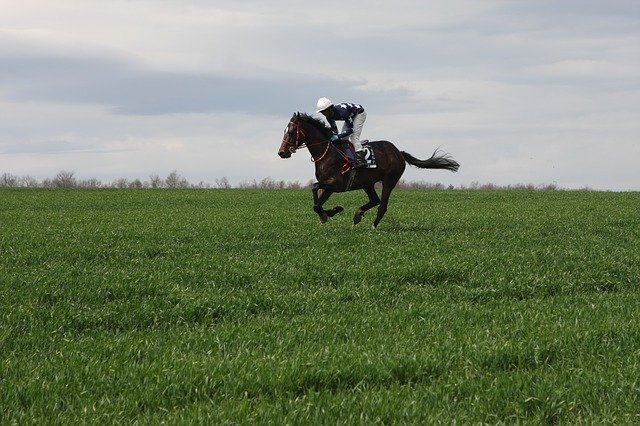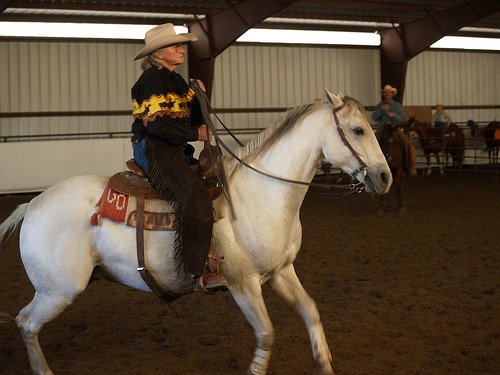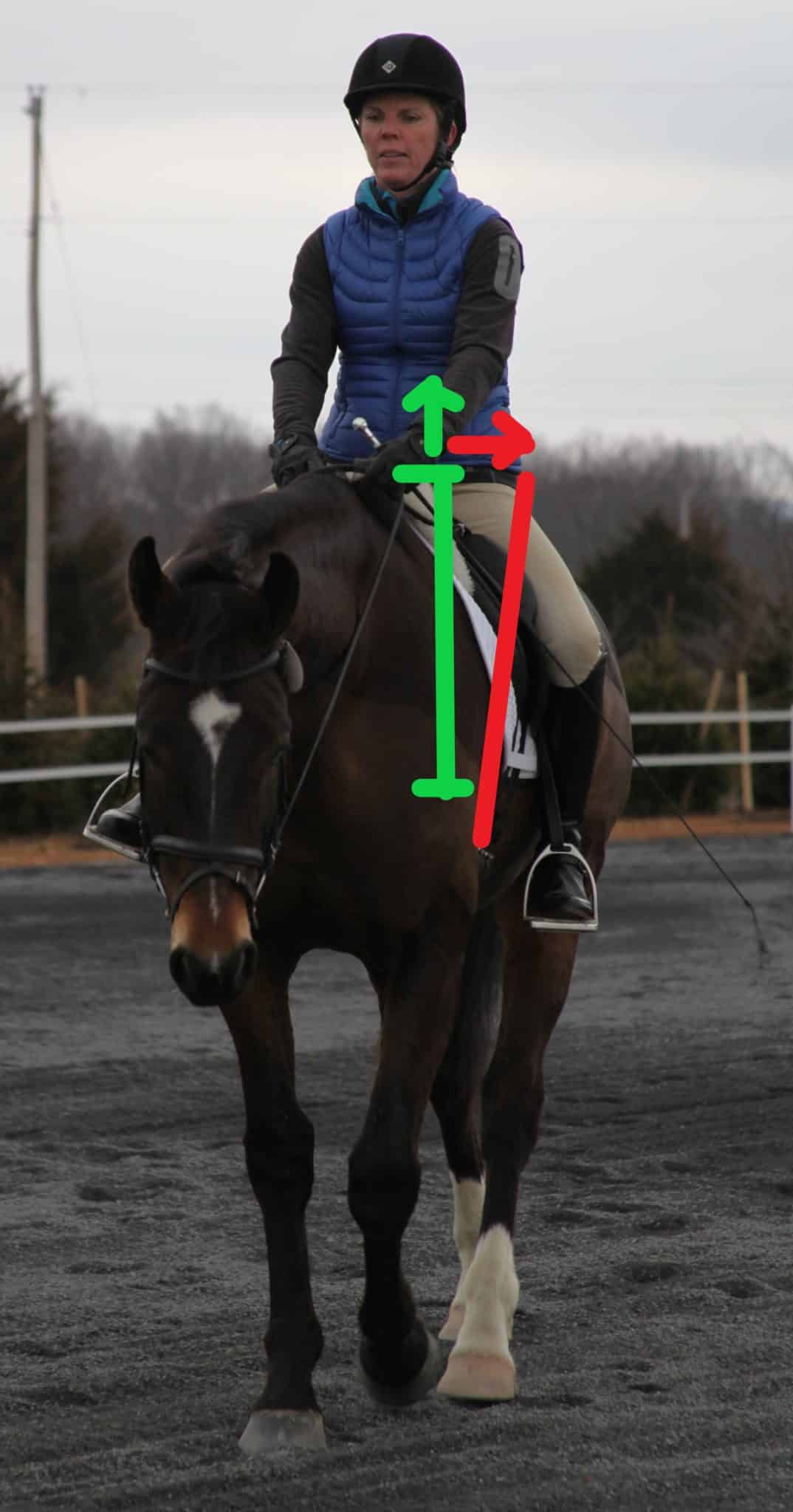

Bolting is one of the most terrifying habits for a horse to develop as well as one of the most dangerous. Anyone who has ever had the misfortune of riding a bolting horse knows the sick, powerless feeling of terror as the half-ton animal beneath you grabs the bit and hurtles out of control with no steering and no brakes. If you’re lucky he’ll do it in a an arena where at least there is a fence to stop him from going too far.
However, know that there is something you can do to prevent your horse from bolting. No, it’s not shoving a bigger bit in his mouth. You must first learn the signs of bolting so you can prevent your horse from bolting in the first place.
Bolting Basics
In order to understand how to prevent bolting, you must first understand what happens when your horse decides to bolt. When a horse bolts, his body tenses up and goes stiff. The part of his body when he is the most stiff is his poll. He locks his poll taking away all lateral and vertical flexion. He then grabs the bit to immobilize it.
There are several ways your horse can immobilize the bit. He can stick his tongue of the bit, grab it in his teeth, or — depending on the type of bit — use his tongue to pin it to the roof of his mouth. All of these methods take away the bit completely. Once he locks his poll and grabs the bit, you’re toast unless you can find a way to unlock his poll. However unlocking his poll is easier said than done as you will usually have under thirty seconds to unlock his poll before he bolts. At which point, the game is up and your options are an emergency dismount or hang on and pray that he doesn’t wipe out or run under a low hanging branch.
Related Content: The Panic Button: How to Avoid Making a Bad Situation Worse
Unlocking the Poll
If you feel your horse starting to grab the bit and lock up his poll, the first thing you do is try to take his face away from him by flexing him laterally. However, failing that put your leg back and yield his hind quarters out from under him.
As with bucking and rearing, your horse can only bolt effectively if all of his body parts are in a straight line. So, if you take away his head or yield his hindquarters out from under him, he can’t get everything in a straight line to bolt. Even if you can’t get his head away from him, his hindquarters are his engine. Shut off the engine and he isn’t going anywhere. Yielding the hindquarters gets him bending his body again and often will give you an opening to take his head away as well and prevent him from locking his poll again.
Know the Warning Signs
I hear a lot of people who have experienced a horse bolting on them say; “he took off with no warning.” I have never seen a horse buck, rear, or bolt with no warning. It is just a matter of how much warning they give. Some horses give a lot of warning while others only give very subtle warnings. However, every horses gives some sort of warning, you just need to know what to look for. Warning signs can include, but are not limited to:
- rooting at the bit
- throwing the head
- hollowing the back
- sticking his tongue over the bit
- excessive spooking/shying
- extreme raising of the head
- rearing
- bucking
Causes of Bolting
Many bolters do so out of fear. They have a strong fight or flight instinct with a distinct preference towards flight. Bolting is a natural reaction to a horse feeling trapped or afraid. However, bolting can also become a habit that is used to get out of work. The first time or two the horse does it is because he feels trapped and afraid, but he quickly realizes that bolting as soon as he becomes uncomfortable gets him out of work. So, bolting becomes a habit whenever he is asked to do something he doesn’t want to do.
It is hard to say which kind of bolter is more dangerous. On one hand, a horse that is bolting out of true fear is doing so in a blind panic. He is giving no thought to his own safety or that of his rider’s. On the other hand, there is the habitual bolter who bolts over every tiny little thing that makes him the least bit uncomfortable. This holds its own dangers because he will resort to bolting over anything and everything. Such horses may even go so far as to purposefully attempt to unseat their rider through bucking, tight turns, or even running under low tree branches.
No matter what kind of bolter you have the misfortune of dealing with, an ounce of prevention is worth a pound of cure. The more you catch the horse before he bolts, the closer you get to breaking the habit — or preventing the habit from forming in the first place.
Cover Photo by paruchev










Thank you for explaining the above in detail. I have also read that as obvious as it seems when you want to stop, saying “whoa” in a deep, low voice” works…
Is this worth bearing in mind, or is it a waste of time trying to communicate verbally with my horse in a bolting situation?
Some horses may benefit. However, many horses won’t care. Horses are not verbal communicators. I find it is often best to save your breath and focus on getting the situation under control.